Realizing Children’s Rights in Malawi
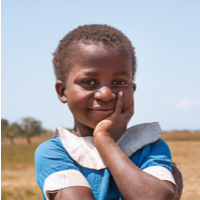
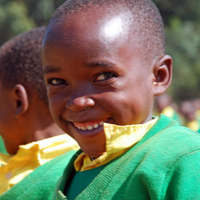
Malawi, a southern African country whose economy rests essentially upon agriculture has committed itself to the respect, defence and promotion of children’s rights. While challenges and gaps remain, there have been encouraging developments in the past decade, aiming to strengthen and realize the rights of Malawian children.

Children’s Rights Index: 5,88 / 10
Black level : Very serious situation
Population: 18.6 millions
Pop. ages 0-14: 40 %
Life expectancy: 63.7 years
Under-5 mortality rate: 41.6 ‰
Malawi at Glance
Nicknamed the “Warm Heart of Africa”, Malawi is a landlocked country located in south-eastern Africa and bordered by Zambia and Tanzania. Malawi is a relatively new State. It gained its independence in 1964 and underwent several regime changes before becoming the democracy it is today.
Malawi remains among the twenty least developed countries globally, despite significant efforts and reforms to sustain its economic growth. The agricultural sector is dominant, especially the tobacco sector, and employs nearly 80% of the working population (WorldBank, 2021). Demographic wise, Malawi has a mostly rural population growing at a rapid rate.
To some extent, these elements explain the following reality: one out of five children live on less than 1.00 USD per day. Yet, Malawi’s economy has significantly grown in the past years (+4,4% in 2019, +3.5% in 2018). This positive change is partly due to agricultural production diversification, expanding to maize and other crops (WorldBank, 2021).
Poverty touches most Malawians, and this leads to severe repercussions. Access to healthy food, financial resources, and health and education services is notably tricky for this isolated and land-locked population. Poverty and inequalities in Malawi remain stubbornly high, the World Bank considering that over half of the Malawian population is suffering from poverty (WorldBank, 2021) (HRC, 2020).
Status of Children’s Rights [1]
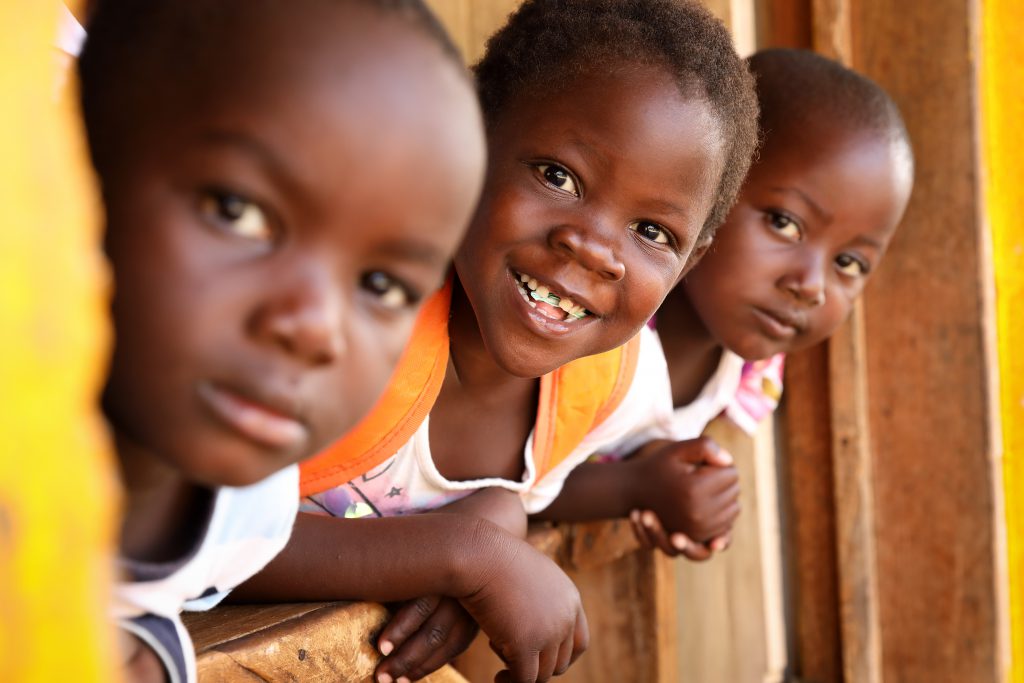
Children represent over 40% of the Malawian population, thus their protection and the enforcement of their right is crucial to the overall respect of Malawi for human rights. Malawi’s commitment to children’s rights can be observed internationally, regionally, and domestically. At the international level, the Republic of Malawi is a member of the United Nations. Under the auspices of the UN and its different bodies, Malawi has ratified the Convention on the Rights of the Child.
In 2009 and 2010, it further ratified two additional protocols to the CRC, the first one being the Optional Protocol to the CRC on the sale of children, child prostitution and child pornography. This marked an important step for the country, especially insofar as children trafficking and child prostitution are active problems in Malawi, for which the government faces difficulties to fight. The second optional protocol is the Optional Protocol to the CRC on the involvement of children in armed conflict. However, Malawi did not accept either the individual complaint procedure under the CRC, nor the inquiry procedure enshrined in article 13 Optional Protocol on Communication Procedures.
Regionally, Malawi is part of the African Union and acceded, in 1999, to the African Charter on the Rights and Welfare of the Child 1990 (ACRWC). The Charter is an important legal tool as it sets out the rights and the status of children. As such, it is considered to be crucial in the fight against child marriage with its article 21(2) providing that “child marriage and the betrothal of girls and boys shall be prohibited” (Girls Not Brides, 2017). The ACRWC further creates a reporting mechanism, ensuring a way for member States to be held accountable.
The State of Malawi enacted several national acts and policies to further strengthen children’s rights in recent years. One of the main changes has been the constitutional amendment of 2017, which raised the age of the child from 16 to 18. Thus, Malawi complied with the requirements set out in the CRC, the ACRWC and the 2015 UPR recommendations made by the UN Human Rights Council. Harmonization of children-related laws at the national level is also almost complete.
At the legislative and policy level, the following acts and policy plans are also worth mentioning: the HIV/AIDS Prevention Management Act (2018), the National Children’s Commission Act (2019, the National Action Plan on Trafficking in Persons (2017-2022), the National Strategy on Adolescent Girls and Young women (2018-2022), the National Strategy on Ending Child Marriages (2018-2022) and the National Action Plan on Child Labour (2019-2025). While the actual impact of these measures will be assessed further below, this at least demonstrates the State’s intent to further implement children’s rights.
Addressing the Needs of Children
Right to Identity
Many children in Malawi are referred to as “invisible” children – their births are not registered, preventing them from being recognized by law. Birth registration is a fundamental right as it provides every child with a name, parentage, nationality, and age. It also constitutes proof of identity, existence in the eyes of the law, and the eyes of society.
Thankfully, in October 2018, the National Registration Act rendered Birth Registration mandatory for all children born in Malawi (HRC, 2020). It is still possible for every child under the age of 16 to go and get registered. Registration will ensure protection from early marriage, trafficking, under-age recruitment into armed forces and child-labour. It will further protect children from being prosecuted as adults. The UN Human Rights Council expressed its content regarding Malawi’s recent legislative initiatives in its 2020 Universal Periodic Report (HRC, 2020). Registration constitutes a first step towards Malawi’s compliance with the CRC and the ACRWC.
Right to Education
Malawi’s educational system follows an 8-4-4 system, which means eight years of primary education, four years of secondary education and four years of tertiary level education. Education has, for a long time, been contingent upon external factors. For instance, a significant drop in child attendance was noticed in 2002 during because of extreme dry season and increase in poverty (World Bank, 2010). Furthermore, while access to education is affected by gender considerations, location and income disparities are more impactful, with poor and/or rural populations having a lesser access to education than urban areas (World Bank, 2010).
As of 2018, both primary and secondary education are tuition-free, which is meant to facilitate access to education. Yet, only 41% of Malawian children attend school, and only 20% of children aged 14-17 years old were attending secondary education in 2018 (National Statistical Office, 2019). The number of young boys and girls out of school did not suggest any discriminatory practice on this matter (for the 14-17 y.o category: 698’754 males and 674’052 females were out of school).
However, the most recent 2018 Malawi Population and Housing Census Report, provided that 68.6% of the population was literate while acknowledging a difference between men and women. It also noted a demarcation between levels of literacy in the North and the South of the country.
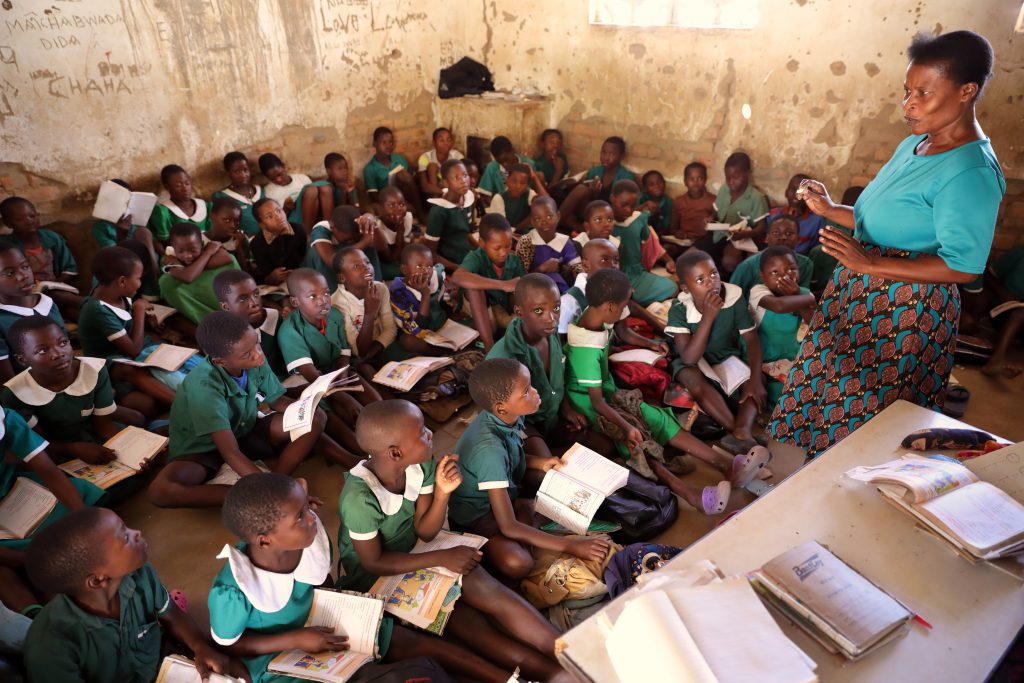
Lack of attendance can be explained by the existence of numerous barriers preventing children from attending schools. On the one hand, economic barriers can affect a child’s ability to attend school. Some parents cannot pay school-related expenses (books, uniforms) while others are pulling children out of school to perform domestic work. On the other hand, practical considerations such as the long distance, inadequate infrastructures, lack of water, electricity, or proper sanitation in school facilities further impeded children’s ability to attend school.
In its Universal Period Review, the HR Council also mentioned children being victims of sexual assaults at school (HRC, 2020). Overall, Malawian schools lack the material, pedagogical tools, and quality instruction they need to fulfil their role.
In response to the Covid-19 pandemic, all schools were closed for five months, starting in March 2020 (Kaponda, 2020). Closure of schools promoted social issues, and a rise in teenage pregnancies has been attributed to the closure. The government authorized schools to reopen in September 2020 upon completing and respecting a sanitary guide (Kaponda, 2020).
Right to Health
Malawi continuously attests of its effort to promote adequate standard of health. As a party to the CRC, Malawi is committed to guarantee access to health care services and right to highest attainable standard of health, including combating child mortality, disease, and malnutrition (article 24 CRC). The Malawian constitutions provides that the State shall ensure “adequate health care, commensurate with the health needs of Malawian society, and international standards of health care”.
Focusing on children, article 23 of the Constitution provides that children are entitled to be protected from economic exploitation or any treatment, work, or punishment that is, or is likely to be harmful to their health (Constitution). One will notice, however, that the Constitution does not recognize child health as an autonomous right. Finally, several national laws contain provisions on the right to health of children, especially the Child Care, Justice, and Protection Act. Finally, the overall Malawi health system relies on the Public Health Act, adopted in 1948. While it has been amended on several occasions, it is considered to be outdated and unable to adequately face emerging issues (UNFPA, 2016).
One specificity of the Malawian health system is its decentralized format. As such, many health-related functions are devolved to district, which leads to disparities in accessible health facilities and treatments. Furthermore, while the higher classes of the population seek treatment in private facilities, healthcare is supposed to be free in all government facilities. There has been increased agreements between the government and Christian Health Association of Malawi (CHAM) to provide child health services throughout the territory. While initially these services were private, the District Health Offices have entered into agreements with the CHAM to provide free child health services (Pattnaik, 2018).
For a long time, there has been a high rate of child mortality due to various diseases, most of which being preventable through vaccines. In order to fight child mortality, a programme was established in 1979, aiming at “reducing morbidity and mortality rates due to vaccine preventable diseases by providing quality immunization services” (Health Government, s.d.). It is considered that high immunization coverage has been reached. In the implementation of said programme, children under one year are systematically vaccinated against several diseases (e.g. Tuberculosis, polio, measles, Hepatitis B, Pneumonia).
There has been significant progress in the field of vaccines for Malawian children. In 2017, the State launched the world’s first Malaria vaccine for children aged 0-2 years old. Malawi is part of this pilot programme, alongside Kenya and Ghana, and coordinated by the WHO. The vaccine has already demonstrated that 4 in 10 cases of Malaria can be prevented (HRC, 2020). The vaccination process requires four doses, administered between 5 and 22 months. Completion and success of this new vaccine would mean a tremendous progress in reducing child mortality in Malawi (WHO, 2019).
Risk Factors – Country-Specific Challenges
Child Marriage
Child marriage remains common in Malawi. Almost half of all Malawian girls are married before turning 18 (the majority of these girls are aged 16-18 years old) (Odhiambo, 2016). It is expected that the harmonization of all laws defining children as anyone under 18 will help reduce such practice. However, the central limit will remain that, under the Malawian legal system, marriages of children aged between 15 and 18 will remain possible upon parental consent (Human rights Watch, 2015).
As such, child marriages will continue lawfully, pending a further amendment to the Constitution (Odhiambo, 2016). Human Rights Watch has estimated that, in 2020, one out of two girls will be married by the time they turn 18 (Randolph, 2020). In addition to being married at a young age, 28% of women aged 15-19 suffer from intimate partner violence (UNAIDS, 2019).
Child Trafficking
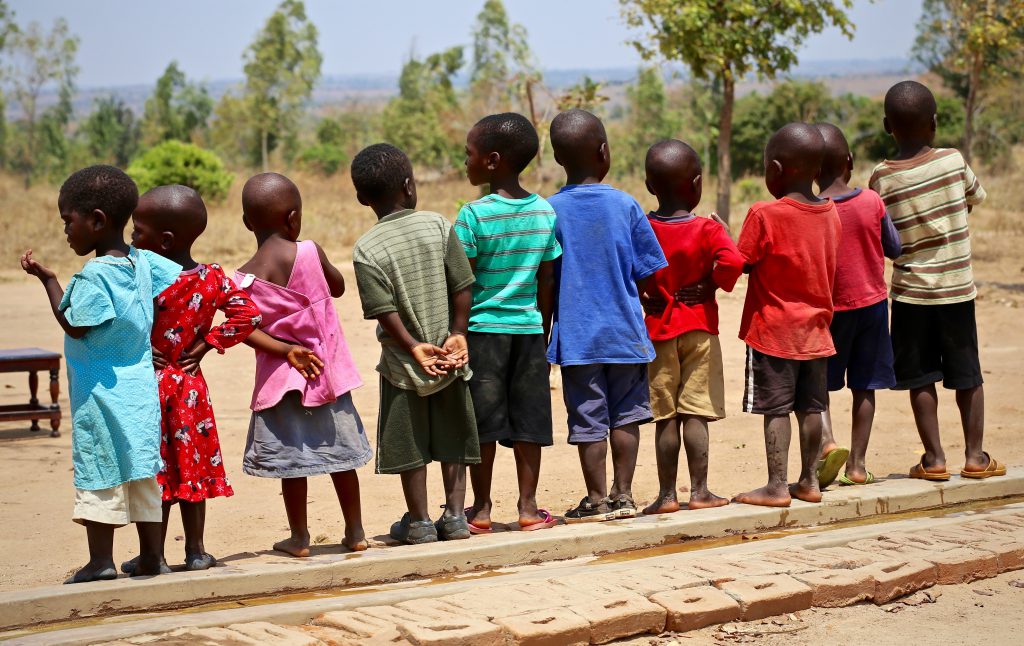
Section 27 of the Malawian Constitution prohibits slavery, servitude and forced labour. This prohibition has further evolved with the enactment of the Trafficking in Persons Act (2015). This Act protects children against exploitation, abuse, slavery, servitude and forced labour by criminalizing such practices (HRC, 2020). While efforts remain to be done, in 2020, Malawi made it to Tier 2 category in the US Report on Trafficking, which means at the same level as most EU countries (Department of State, 2020). This categorization concerns human trafficking in general and is not limited to children. However, it shows an improvement in the prevention and the fight against trafficking.
To enforce recent legal developments, the Malawian government established a special Child Protection Section within the national police service. This special unit cooperates with border countries and international organizations (notably Interpol) to fight child trafficking. As such, the Child Protection Section rescued 121 children in 2017 (HRC, 2020).
Most child trafficking with a labour-oriented purpose takes place internally in Malawi. Boys from the southern parts of the country are particularly at risk and often forced to go work in tobacco farms in the country’s northern parts (Department of Labour, 2019). Traffickers exploit teenage boys in forced labour on farms, and young girls in sexual exploitation in clubs or bars. Child trafficking also takes place from Malawi to other African (e.g. Tanzania, Zambia, Mozambique) or Middle Eastern countries (Department of State, 2020).
Child Labour
In 2017, 38% of children aged 5-17 were involved in child labour (HRC, 2020); almost 70% of those children worked in agriculture (Department of Labour, 2019). To this date, children are still enrolled in the worst forms of child labour, including the harvesting of tobacco and commercial sexual exploitation. Young boys are also employed in cattle farms and the brickmaking industry. Each of these forms of child labour is often the result of child trafficking (Department of Labour, 2019). Children involved in the production of tobacco risk illness from nicotine absorption and are exposed to toxic substances (pesticide, chemicals) and often use sharp and dangerous tools.
Not all child labour is the result of child trafficking. There is a common practice of tenancy systems in the Malawian agricultural sector. In a nutshell, in a tenancy system, tenants’ pay is based on the quantity and quality of the tobacco transferred to landowners. This monetary incentive often pushes parents to use their children to increase their earnings. In this vicious cycle, it is common for landowners to increase rents during tobacco season, making it impossible for tenants to pay rent, placing families in never-ending debt bondage (Department of Labour, 2019). Many children in these conditions do not attend school either.
Malawi has ratified all key international instruments concerning child labour. The most recent is the ratification in 2019 of the Protocol to the Forced Labour Convention (2014), requiring Malawi to adopt measures preventing and protecting child labour victims. Yet, significant discrepancies remain between international instruments and national laws. In an attempt to eradicate child labour, the Malawian government set in place National Actions Plans on Child Labour Elimination.
The first plan ran from 2012 to 2017, and the current plan, which started in 2019, will run until 2025. While several programmes have been implemented throughout the years, several gaps remain, mainly due to a lack of funding. In 2020, the Child Labour Elimination in Action for Real Change (CLEAR) project was launched by the Elimination of Child Labour in Tobacco Growing Foundation. One must still wait on its concrete effects. However, this programme will only concern the tobacco sector.
Sexual Exploitation
As one of the worst forms of child labour, young girls in Malawi are regularly engaged in sexual exploitation (Department of Labour, 2019). Sexual exploitation of girls usually takes two forms: some girls are drugged, gang-raped and exploited in commercial sex; other girls are forced into marriage at a young age and then exploited in sex trafficking by their “husband” (Department of State, 2020). While sexual exploitation mainly takes place internally, Malawian victims of sexual exploitation have been identified in foreign countries (Mozambique, South Africa, Zambia, Kenya, Iraq, Kuwait, Saudi Arabia (Department of State, 2020).
A tragically common scenario for the first form of sexual exploitation entails young girls from rural areas moving to larger cities searching for work. Sexual exploiters mainly lure children from rural areas by offering employment opportunities, food, and shelter. They are often overcharged, resulting in sexual commercial exploitation through coerced debts (Department of Labour, 2019) (Department of State, 2020).
It must be noted that, sadly, law enforcement is not necessarily a safe space for children involved in child labour. Indeed, there have been cases of children falling victims to abuse, including sexual extortion, by the police (Department of Labour, 2019).
Female Genital Mutilation
Female Genital Mutilation practices form part of the traditional customs in Malawian culture. They are still deeply entrenched in society, leading to discrimination and marginalization of young girls (HRC, 2020). These practices adversely impact girls’ education, health, liberty, dignity (Chatora, 2015). There are no data available on the impact of female genital mutilation in Malawi. It is, however, confirmed that these practices continue. Available information shows that these practices are mainly present in the country’s southern region (Chatora, 2015).
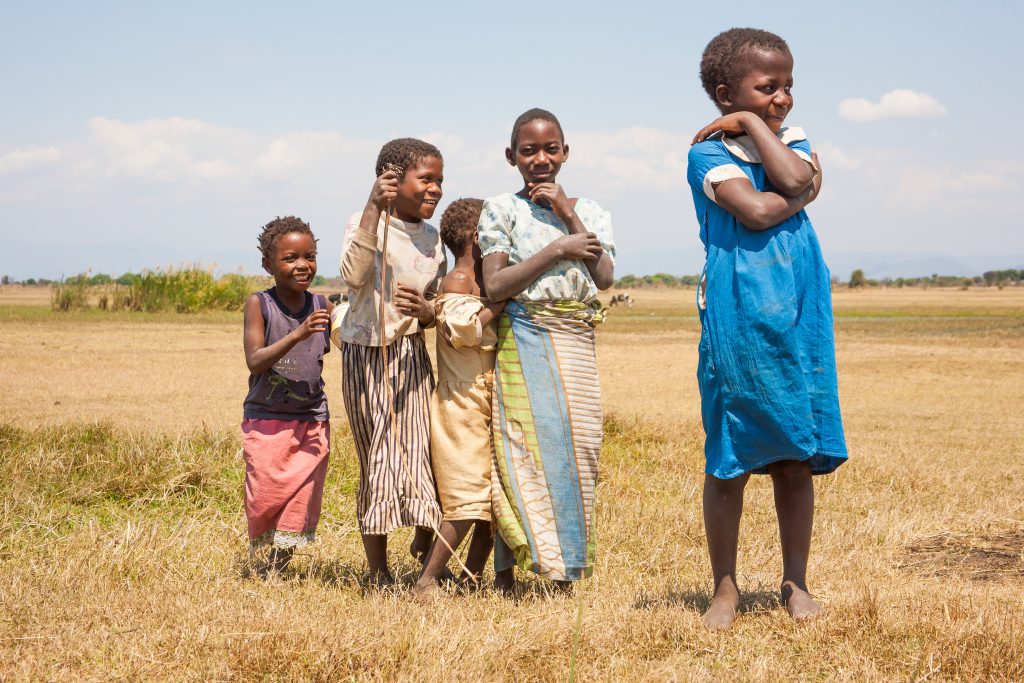
Female Genital Mutilation in Malawi entails partial or total removal of the female external genitalia for non-medical purposes. The lack of data is due to the secrecy surrounding these cultural practices. Said practices often include young girls, at the age of puberty, being taken to the forest in houses explicitly built for the occasion for an “initiation to womanhood”. Built-in camps are destroyed after completing the rite of passage, making it difficult to gather data on these practices (Chatora, 2015) (Orchid Project, 2018).
Children with AIDS (HIV)
It is estimated that around 65 000 children aged 0-14 are living with HIV/AIDS. Risks of infection with diseases such as hepatitis A, typhoid fever and malaria are very high, while access to physicians is limited. However, there has been a steady decrease in HIV cases in the past decade. This decrease results from intensive policies led by the government and civil societies in recent years.
The 2018 HIV/AID Act provides for the prevention and management of HIV and AIDS while ensuring the rights and obligation of individuals affected by HIV/AIDS. It further created a National Commission in charge of implementing the Act, for instance, by ensuring the right to privacy of affected people.
This Act is part of a larger 2015-2020 plan, which includes various measures, one of which is raising awareness about preventing HIV, notably through Life Skills Education for young people both in school and out of school (HRC, 2020). LSE classes were taught to 53 600 children. Yet, this is well below the 150 000 targeted thresholds. LSE classes can also be affected by poor teaching conditions and a lack of community support for sex education classes (HRC, 2020) (Avert, 2019).
Despite numerous efforts on the topic of HIV prevention/treatment, critical limits remain. These limits are twofold. On the one hand, there are cultural barriers, such as multiple and concurrent sexual partners for men, which is part of the Malawian culture. Furthermore, a 2013 study based on married women’s interviews found that marriages in Malawi are characterized by stark gender inequalities and constitute a risk factor for HIV infection in women.
On the other hand, legal barriers are also problematic. While there is no national law directly discriminating HIV-positive individuals, strong punitive laws criminalizing sex work and same-sex sexual intercourse prevent the targeted population (the at-risk population when it comes to HIV/AIDs) from seeking treatment.
Written by Léa Allix
Last updated on 13 February 2021
Bibliography:
Avert. (2019). HIV and AIDS in Malawi. Retrieved on January 24, 2021, from avert.org.
HRC, H. R. (2020). National Periodic Report Malawi A/HRC/WG.6/36/MWI/I. United Nations.
Pattnaik, C. a. (2018). Expanding Health Care Provision in a Low-Income Country: the Experience of Malawi. World Bank Group .
UNAIDS. (2019). Malawi- HIV and AIDS estimates. Retrieved from January 26, 2021, from unaids.org.
UNFPA. (2016). Of the Cycle of Accountability for Sexual, Reproductive, Maternal, Child and Neonatal Health and Human Rights .
WHO. (2019). First Malaria Vaccine in Africa. Retrieved from World Health Organization (WHO).
World Bank. (2010). The Education System in Malawi- World Bank Working Paper no. 182.
WorldBank. (2021, 01 24). Malawi Overview. Retrieved from World Bank.
[1] This article by no means purports to give a full or representative account of children’s rights in Malawi; indeed, one of many challenges is the scant updated information on Malawian children, much of which is unreliable, not representative, outdated or simply non-existent.

